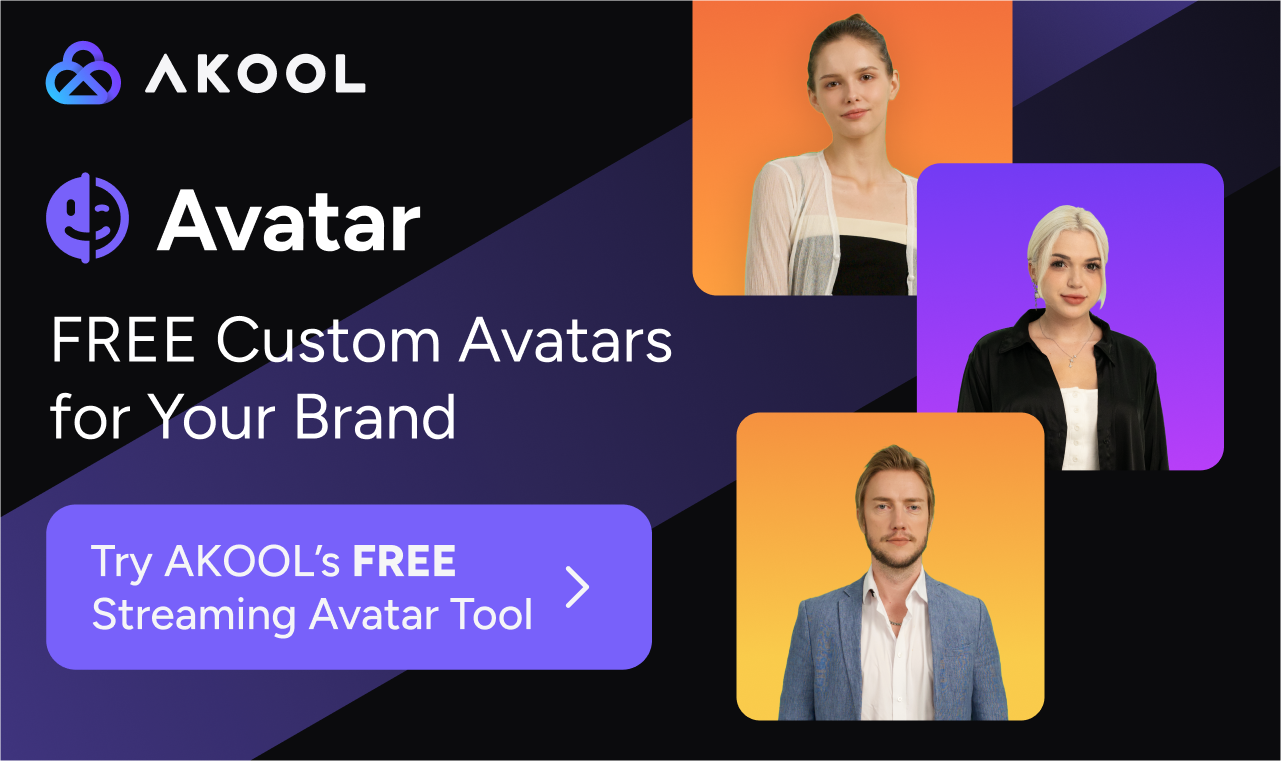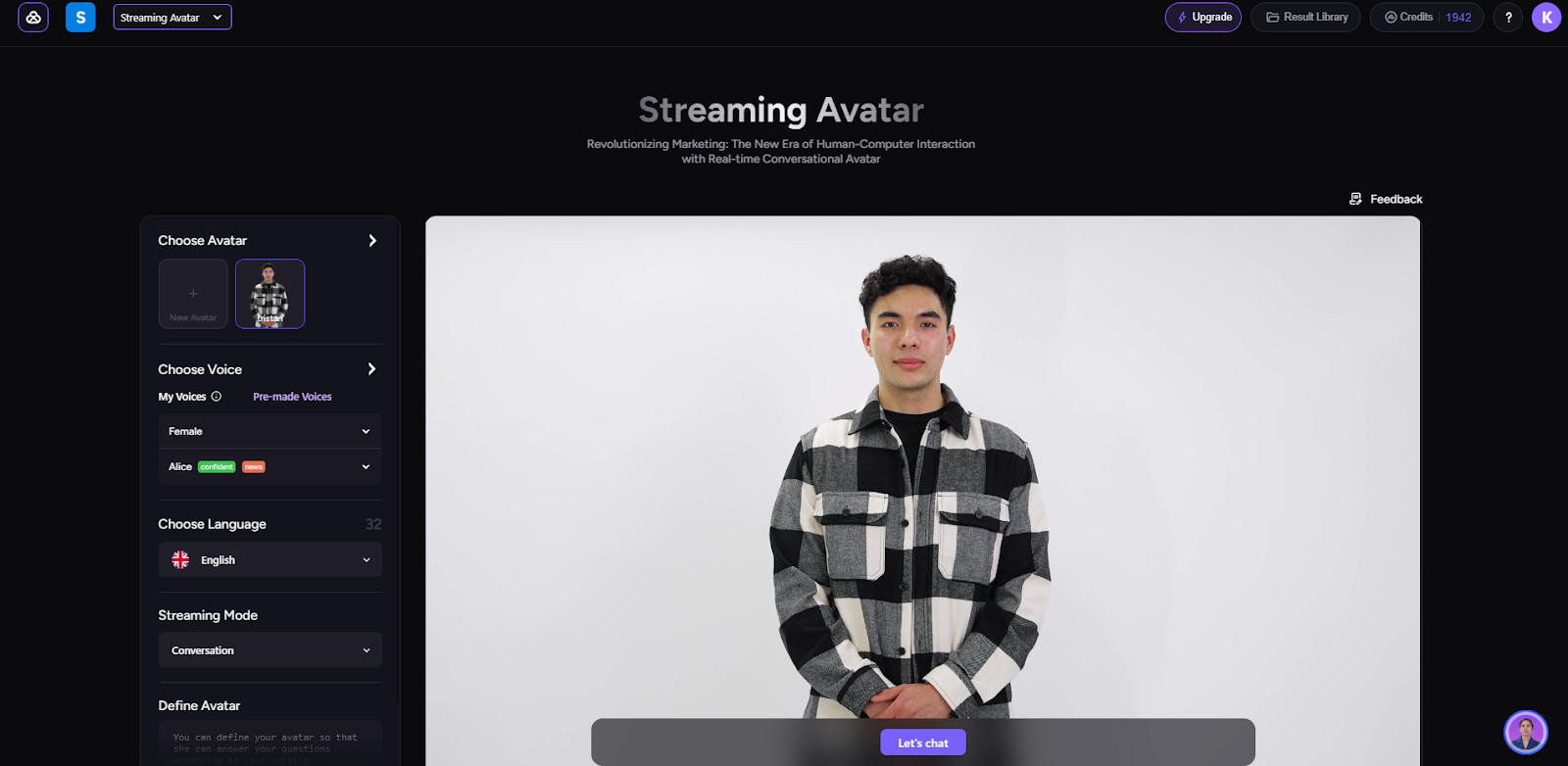Le contenu généré par les utilisateurs (UGC) génère des conversions car il semble réel, et le public fait davantage confiance aux gens ordinaires qu'aux publicités de marque raffinées. C'est particulièrement efficace sur des plateformes comme TikTok et Instagram, où l'authenticité stimule l'engagement et la crédibilité.
Cependant, il est difficile de s'approvisionner en UGC de qualité à grande échelle. Les créateurs ne respectent pas les délais, les directives de la marque sont négligées et la cohérence du contenu devient un défi.
L'UGC généré par l'IA résout ce problème en produisant des vidéos réalistes et adaptées à la marque en utilisant des créateurs virtuels ou des avatars : pas de tournage, pas d'attente et pas d'imprévisibilité.
Dans cet article, nous allons vous expliquer :
- Qu'est-ce que l'UGC généré par l'IA
- Comment ça marche
- Comment le créer
- Montrez des exemples concrets de marques qui l'utilisent déjà pour obtenir des résultats.
Qu'est-ce que le contenu utilisateur généré par l'IA (UGC) ?
Le contenu généré par les utilisateurs (AI UGC) est un contenu vidéo qui a l'air d'avoir été créé par une personne réelle, mais qui a en fait été créé à l'aide de l'intelligence artificielle. Ces vidéos comportent souvent des avatars réalistes ou créateurs virtuels qui transmettent les messages de marque dans un style naturel, décontracté et social, tout comme les UGC traditionnels.
L'objectif est de reproduire l'authenticité et le ton de l'UGC sans faire appel à de véritables influenceurs ou clients.
AI UGC est créé à l'aide d'une combinaison d'outils qui simulent la présence humaine et la parole :
1. Génération d'avatars
Choisissez une solution réaliste personne virtuelle (ou créez-en une personnalisée) pour servir de « créateur » dans votre vidéo. Ces avatars peuvent imiter les expressions faciales, les gestes et la synchronisation labiale.

En savoir plus sur influenceurs virtuels.
2. Saisie de script + IA vocale
Vous rédigez un court script occasionnel. Les outils vocaux d'IA, souvent dotés d'options pour cloner de vraies voix humaines, changent la donne texte dans un dialogue parlé, sur un ton naturel et conversationnel.
3. Rendu vidéo
L'IA fusionne la voix et l'avatar synchronisation des mouvements du visage, le ton et le timing pour créer une vidéo qui semble avoir été filmée par une personne réelle avec la caméra d'un téléphone.
Le résultat final ? Une vidéo sécurisée et à taux de conversion élevé qui imite l'ambiance du contenu des influenceurs, diffusée en quelques minutes, et non en plusieurs semaines.

Comment créer du contenu utilisateur généré par l'IA
La création d'un UGC généré par l'IA à l'aide d'un outil d'avatar tel que Streaming Avatar d'AKOOL est un processus rationalisé conçu pour reproduire du contenu de style influenceur sans avoir besoin d'une personne réelle devant la caméra. Voici comment cela fonctionne :
1. Choisissez votre présentateur virtuel
Commencez par sélectionner un avatar prédéfini dans la bibliothèque diversifiée d'AKOOL ou téléchargez une photo personnalisée pour générer votre propre personnage virtuel. Ces avatars sont conçus pour être réalistes et diffuser du contenu de manière naturelle et attrayante, ce qui est parfait pour imiter des vidéos de style UGC.
2. Rédiger un script conversationnel
Préparez un script court et décontracté qui correspond au ton du contenu organique des réseaux sociaux. Considérez-le comme un TikTok ou un Instagram Reel : utilisez un langage courant, un phrasé pertinent et maintenez-le en moins de 60 secondes pour un engagement maximal.
Exemple :
« Hé les gars ! Je viens d'essayer ce nouveau sérum de soin de la peau et ma peau est littéralement éclatante. Tu dois y jeter un œil ; l'encre est dans la biographie ! »
3. Sélectionnez la voix et la langue
AKOOL vous permet de choisir parmi une variété de Voix de l'IA dans différents tons, accents et langues. Cela vous permet de localiser votre vidéo et de l'adapter au ton de votre marque, qu'il soit énergique, chaleureux ou professionnel.
4. Synchroniser et générer
Une fois le script et la voix sélectionnés, l'outil synchronise automatiquement les expressions faciales, les mouvements des lèvres et les gestes de l'avatar avec le son. Vous n'avez pas besoin de modifier ou d'animer quoi que ce soit. L'IA gère tout.

Comment surmonter les défis liés à la mise en œuvre de l'IA UGC
1. Vous avez l'air trop « IA » ou inauthentique
Défi : Si l'avatar ou la voix semblent trop robotiques ou trop soignés, le public peut avoir l'impression que c'est artificiel, ce qui va à l'encontre de l'objectif d'imiter un véritable UGC.
Solution :
- Utilisez des avatars hyperréalistes et des modèles vocaux humains avec un rythme, des émotions et des imperfections naturels.
- Faites en sorte que les scripts soient conversationnels : utilisez de l'argot, des mots de remplissage et une formulation décontractée pour correspondre au contenu social réel.
- Choisissez des formats qui imitent les styles sociaux natifs (par exemple, vidéos de style selfie, orientation verticale, montages lo-fi).
2. Manque de diversité et de personnalisation
Défi : Le fait d'utiliser le même avatar à plusieurs reprises ou de ne pas représenter différents segments d'audience peut sembler générique et aliéner les spectateurs.
Solution :
- Tirez parti d'outils proposant des avatars variés selon l'âge, l'origine ethnique et le style.
- Personnalisez le contenu par segment d'audience : créez plusieurs versions avec différents créateurs, tons ou produits ciblés pour correspondre à des profils d'acheteurs spécifiques.
- Utilisez l'IA pour traduire des vidéos en direct
3. Utilisation abusive de Deepfakes/fausses recommandations
Défi : Les avatars générés par l'IA peuvent être utilisés à mauvais escient pour falsifier des recommandations, créer du contenu trompeur ou imiter de vraies personnes sans leur consentement. Cela nuit non seulement à la confiance, mais peut également avoir de graves conséquences juridiques ou de réputation.
Solution :
- Utilisez toujours des avatars consensuels sous licence ou des personnages générés par l'IA, et non de vraies personnes sans autorisation.
- Faites preuve de transparence lorsque cela est nécessaire : indiquez clairement quand le contenu est généré par l'IA si cela affecte la confiance des consommateurs.
- Évitez de rédiger des scripts qui impliquent un véritable témoignage ou un véritable avis, à moins qu'il ne soit basé sur des commentaires réels des utilisateurs.
En savoir plus sur médias synthétiques.

L'avenir du contenu utilisateur piloté par l'IA
Alors que la technologie de l'IA continue d'évoluer, son impact sur la publicité UGC est appelé à transformer la façon dont les marques abordent le marketing sur les réseaux sociaux.
Bientôt, l'IA générera des expériences publicitaires immersives intégrant des éléments de style utilisateur à des fonctionnalités interactives.
Des filtres de réalité augmentée imagés qui s'adaptent en fonction des habitudes d'engagement des utilisateurs ou des expériences d'essai virtuelles aussi naturelles que de regarder le témoignage d'un ami sur un produit.
Créer une publicité IA UGC de qualité professionnelle n'a jamais été aussi simple, grâce à des outils comme celui d'AKOOL Avatar en streaming.



.png)





